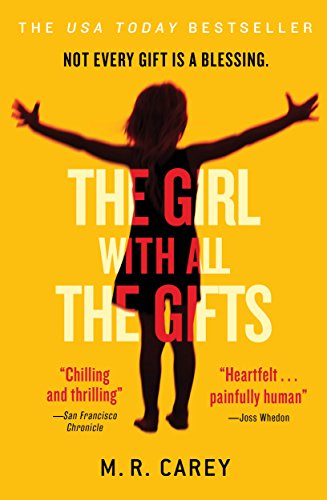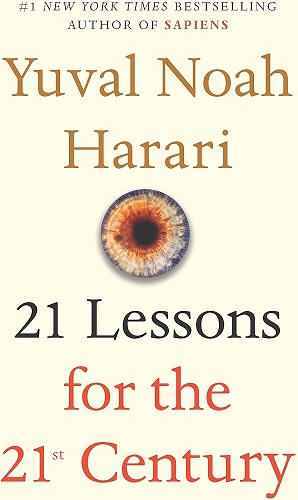E se a próxima pandemia não for viral? E se o próximo microorganismo a condicionar a vida humana for um fungo? É com um futuro distópico, em que os fungos tomam conta do nosso planeta, que M. R. Carey nos apresenta a história de Melanie, a menina com todos os dons, e dos personagens que com ela interagem. Esta não é uma história comum e quando começarem a ler vão ver que não vão conseguir parar de virar as páginas até saberem o que acontece a seguir.
Os fungos e a área científica que os estuda, a micologia, são muitas vezes negligenciados e não lhes é dado o devido crédito pela relevância nas nossas vidas. No entanto, os fungos têm a capacidade quer de nos de nos causar doenças ou matar, quer de contribuir largamente para a nossa vida diária e para a nossa sobrevivência.
Não é exagero dizer que nos podem matar. Prova disso é a recente lista de espécies patogénicas que foi publicada pela Organização mundial de saúde (OMS) – fungal priority pathogens list (www.who.int/publications/i/item/9789240060241) onde são listados os fungos mais perigosos para a saúde humana. Nos últimos anos temos assistido a um aumento de infeções causadas por fungos, algumas por espécies que antes nos eram inofensivas. A investigação nesta área defende que a situação actual se deve à habilidosa e impressionante capacidade que os fungos têm para se adaptar a novas condições. Parte do problema deve-se às alterações climáticas a que o nosso planeta tem estado sujeito, antevendo-se assim um agudizar crescente desta situação. É dentro deste contexto que o autor, Mike Carey, ou M. R. Carey (como é mais conhecido), nos conta uma história de terror, levando ao extremo um caso de infecção por fungos, num cenário pouco provável de acontecer.
M. R. Carey é um escritor inglês de Liverpool. O seu trabalho inclui uma longa lista de bandas desenhadas, romances e também filmes. Relativamente à banda desenhada, área que o torna bem conhecido para determinado tipo de público, notabilizou-se pelo seu trabalho na Marvel (nomeadamente com a sua passagem pelos X-Men) e na DC Comics (tendo estado envolvido com a série The Sandman). A sua criatividade é admirável e os seus livros deixam muitos leitores sem fôlego. Os mundos distópicos que descreve são verdadeiramente fascinantes, atraindo uma enorme legião de fãs incondicionais das suas obras.
O livro The girl with all the gifts, teve origem numa pequena história que o autor escreveu apenas em quatro dias, chamada de Iphigenia in Aulis. Esta foi parte de um grupo de pequenas histórias publicadas numa antologia de fantasia e terror, num livro intitulado An Apple for the Creature e editado por Charlaine Harris e Toni L. P. Kelner.
O livro apresenta-nos uma história que se foca maioritariamente num personagem, Melanie, uma menina com apenas dez anos de idade, e retrata-nos um mundo destruído e apocalíptico devido a um fungo que infecta seres humanos e os torna numa espécie de zombies esfaimados e agressivos. É curioso notar a intersecção entre ficção e realidade científica que serve de suporte a esta história. Embora possa parecer surpreendente, o fungo mencionado neste livro existe mesmo. Trata-se de uma espécie do género Ophiocordyceps, com alguma notoriedade nos meios científicos. Na realidade, este fungo infecta insectos, especificamente formigas, tendo a capacidade invulgar de tomar conta do seu comportamento, de tal forma que elas se comportam como zombies que promovem e aumentam a propagação deste fungo. Neste processo, o fungo obriga as formigas infectadas a deslocarem-se para locais elevados, em árvores, de onde se torna mais fácil o fungo libertar esporos atingindo uma capacidade de proliferação acrescida. Assim que chegam a estes locais elevados, as formigas fixam-se com as suas mandíbulas na parte inferior de uma folha, onde permanecem até morrer. Nesta altura o fungo gera uma estrutura que sai pela cabeça da formiga e de onde consegue libertar grandes quantidades de esporos que irão eventualmente infectar as formigas que andarem na base da árvore. A parte ficcional do livro descreve uma infecção idêntica em humanos, mas que não acontece na realidade. Esta espécie não consegue sobreviver no organismo humano visto que necessita de temperaturas entre os 20 e os 30 ºC para o seu desenvolvimento normal, valores inferiores às temperaturas encontradas no nosso corpo (cerca de 37ºC). Pelo menos até agora esta espécie não se conseguiu adaptar às condições do nosso corpo. Mas a natureza é surpreendente e embora muito improvável, tal adaptação pode um dia vir a acontecer.
Curiosamente, este tipo de infecção foi também explorado na história do jogo de Playstation The Last of Us, que recentemente foi transformado numa popular série televisiva. Embora a infecção mencionada seja a mesma, as histórias são bem diferentes. Neste livro, o autor cria desde as primeiras páginas uma tensão palpável e deixa-nos num estado de ansiedade que só vai sendo resolvido com o virar das páginas. A vida de Melanie torna-se no foco do livro visto ela mostrar características bem incomuns e sendo tratada de uma forma que nos deixa solidários com ela. Ela faz parte de um grupo de crianças infectadas mas que sobrevivem e mantêm função cerebral sem que esta seja completamente dominada pelo fungo. Este grupo de crianças é mantido numa infraestrutura militar onde estão como prisioneiras e onde são submetidas a diversos testes, nem sempre inócuos ou indolores, com o objectivo de encontrar uma cura ou um tratamento que possa salvar a humanidade.
Quando discutimos a categoria de ficção científica recente, é difícil não ter em conta este livro que nos segura do início ao fim para sabermos o que acontece a seguir. Esta história verdadeiramente original foge a todos os clichés típicos de histórias sobre zombies e mostra-nos personagens com os quais nos conseguimos relacionar. Prova da sua qualidade e originalidade são os inúmeros prémios literários que já ganhou e para os quais foi nomeado (por exemplo: “Audie Award” e “Arthur C. Clarke Award”). Por outro lado, a popularidade desta história garantiu a atenção de Hollywood e rápida produção de uma versão em filme, com o argumento adaptado pelo próprio autor, dirigido por Colm McCarthy, e produzido por Camille Gatin e Angus Lamont. Este filme contou com a participação de Glenn Close, e teve Sennia Nanua a interpretar o papel de Melanie. No entanto, muito ao contrário do que acontece regularmente, o guião do filme foi escrito ao mesmo tempo que o livro num processo criativo bem diferente. Embora a história geral seja a mesma, o livro mostra-nos pontos de vista de vários personagens enquanto o filme explora principalmente o ponto de vista de Melanie. Não vos posso contar mais detalhes para não vos estragar a leitura, mas garanto-vos que este livro é uma escolha acertada e é mais interessante que o filme (que é o que acontece quase sempre quando comparamos os filmes com os seus respectivos livros). Se o lerem e não concordarem comigo, deixem comentários on-line. ;) Se, depois de lerem este livro, ele vos saber a pouco, fiquem com a boa notícia de que em 2017 o autor publicou uma prequela desta história, também muito comovente, com o livro The Boy on the Bridge passado no mesmo mundo da Melanie.





